INSTITUT SUPERIEUR D'ANTHROPOLOGIE
INSTITUTE OF ANTHROPOLOGY
ONLINE COURSES / COURS A DISTANCE
INSCRIPTION 2012 / Session III : Juillet 2012
REGISTRATION 2012 / Term III : July 2012
BULGARIE – 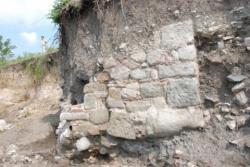 Sarafovo - Archaeologists have found a church dating back to the late Antiquity period, which is located near the village of Sarafovo, on the Black Sea coast. The site, which is close to the Bulgarian Black Sea city of Burgas, has been excavated by the team of Prof. Dr. Lyudmil Vagalinski, who is the Director of the National Archaeology Institute and Museum at the Bulgarian Academy of Sciences, since the start of May 2012. "We can safely say that we have found a small church. Initial evidence allows us to date it back to the 4th-6th century AD," Prof. Vagalinski explained as cited by Darik Radio. The excavations at Sarafovo (a village also known for hosting a military airfield) began after over the winter the sea waves uncovered parts of a Roman structures – a residential building with a sewage system, whose existence has been suspected by Bulgarian archaeologists since the 1970s. Initially, the Bulgarian archaeologists supposed they might uncover a Roman town on the coast of the Black Sea, with a port at the entrance of local mineral baths – located at a town known as Aquae Calidae (located on the territory of two quarters in today's city of Burgas). The latest excavations, however, have rejected the hypothesis of thearchaeologists of the existence of a new Roman-era port town near Aquae Calidae, and have only confirmed the existence on the spot of a small ancient church instead. The excavations in Sarafovo will continue by mid-June.
Sarafovo - Archaeologists have found a church dating back to the late Antiquity period, which is located near the village of Sarafovo, on the Black Sea coast. The site, which is close to the Bulgarian Black Sea city of Burgas, has been excavated by the team of Prof. Dr. Lyudmil Vagalinski, who is the Director of the National Archaeology Institute and Museum at the Bulgarian Academy of Sciences, since the start of May 2012. "We can safely say that we have found a small church. Initial evidence allows us to date it back to the 4th-6th century AD," Prof. Vagalinski explained as cited by Darik Radio. The excavations at Sarafovo (a village also known for hosting a military airfield) began after over the winter the sea waves uncovered parts of a Roman structures – a residential building with a sewage system, whose existence has been suspected by Bulgarian archaeologists since the 1970s. Initially, the Bulgarian archaeologists supposed they might uncover a Roman town on the coast of the Black Sea, with a port at the entrance of local mineral baths – located at a town known as Aquae Calidae (located on the territory of two quarters in today's city of Burgas). The latest excavations, however, have rejected the hypothesis of thearchaeologists of the existence of a new Roman-era port town near Aquae Calidae, and have only confirmed the existence on the spot of a small ancient church instead. The excavations in Sarafovo will continue by mid-June.
http://www.novinite.com/view_news.php?id=139750
EGYPTE – 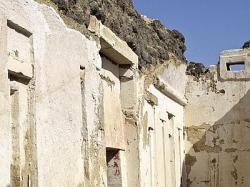 Deir al-Barsha - Archaeologists have discovered an 4,000-year-old tomb in Upper Egypt containing a sarcophagus inscribed with ancient funeral texts as well as ritual objects, Egypt's archaeological treasures minister said Monday. "It is the first time in many years that such a well-preserved tomb has been unearthed, " said Muhammad Ibrahim. The tomb dates from ancient Egypt's First Intermediate period (2181-2055 BC) and is an unusual find, as very little archaeological evidence survives from this period. Ritual objects made from alabaster copper, terracotta and other materials were found in the tomb, located in the Deir al-Barsha archaeological area, in al-Minya province, 245 kilometres south of Cairo. The dig was coordinated by the Catholic University of Louvain in Belgium.
Deir al-Barsha - Archaeologists have discovered an 4,000-year-old tomb in Upper Egypt containing a sarcophagus inscribed with ancient funeral texts as well as ritual objects, Egypt's archaeological treasures minister said Monday. "It is the first time in many years that such a well-preserved tomb has been unearthed, " said Muhammad Ibrahim. The tomb dates from ancient Egypt's First Intermediate period (2181-2055 BC) and is an unusual find, as very little archaeological evidence survives from this period. Ritual objects made from alabaster copper, terracotta and other materials were found in the tomb, located in the Deir al-Barsha archaeological area, in al-Minya province, 245 kilometres south of Cairo. The dig was coordinated by the Catholic University of Louvain in Belgium.
http://www.adnkronos.com/IGN/Aki/English/CultureAndMedia/Archaeology-Ancient-tomb-unearthed-in-Upper-Egypt_313348482645.html
AUSTRALIE – 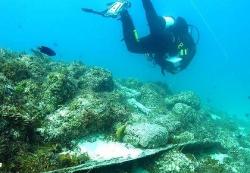 Queensland – Redland boaties are being asked to help document shipwrecks off the Queensland coast as part of National Archaeological Week, which ends on Sunday (20 - 26 May). The location of the Grace Darling wreck, near Bulwer on Moreton Island, was verified in September. Marine archaeologists estimate more than 1400 ships have been wrecked or abandoned along the Queensland coast since the 18th century. “While we know the locations of ships that were deliberately scuttled on beaches and foreshores or abandoned up rivers and creeks, others were lost at sea and never seen again and we are keen to find exactly where those wrecks are," Mr Powell said. To be declared “historic” ships must be wrecked for 75 years or more.
Queensland – Redland boaties are being asked to help document shipwrecks off the Queensland coast as part of National Archaeological Week, which ends on Sunday (20 - 26 May). The location of the Grace Darling wreck, near Bulwer on Moreton Island, was verified in September. Marine archaeologists estimate more than 1400 ships have been wrecked or abandoned along the Queensland coast since the 18th century. “While we know the locations of ships that were deliberately scuttled on beaches and foreshores or abandoned up rivers and creeks, others were lost at sea and never seen again and we are keen to find exactly where those wrecks are," Mr Powell said. To be declared “historic” ships must be wrecked for 75 years or more.
http://www.baysidebulletin.com.au/news/local/news/general/all-hands-on-deck-for-shipwreck-survey/2567763.aspx
KENYA – Malindi - Kenya is on the brink of building Africa's first underwater museum, which will be dedicated to studying marine life and shipwrecks. The museum will be located in the shores near the town of Malindi, a popular tourist destination. ‘’Shipwrecks attract a lot of fish which feed on micro-organisms on the wood [of the ships] and they are also a habitat for the fish and several other aquatic species. We will partner with many organisations in the study of marine life," said Bita.
http://www.guardian.co.uk/environment/2012/may/28/kenya-africa-underwater-museum?newsfeed=true
ROYAUME UNI –  Hylton - A flurry of ancient finds has sparked renewed calls for investigations into a possible Roman dam in Sunderland. Historians have long debated the origins of a stone structure which once spanned the River Wear between North and South Hylton – but a definitive answer has yet to be unearthed. Recent Roman finds such as a figurine, pottery shard and several coins have re-ignited the debate over the history of the structure,” said Castle ward councillor and local historian Denny Wilson. “One theory is that the Romans built it as a dam, to enable the transport of goods by boat much further up river. If proved to be Roman, this could really put Sunderland on the map.” Old documents show the ancient structure was known as the Brig Stones in the 18th and 19th centuries, and that it was used by generations of Wearsiders as a causeway. During Victorian times, however, after keelmen complained of difficulties navigating the stones at low tide, the dam was removed by the River Wear Commissioners. “The first removal phase was to enable free movement to the colliers, at a time when coal mining was very much on the rise,” said Alan Richardson, of the Northern Archaeology Group. “Later, when the Commissioners decided to deepen the river channel, the dredger Hercules damaged its teeth on the remaining levels in the river bed. “That is when they engaged the famous Sunderland diver Harry Watts to raise the remaining stone. But Harry didn’t just bring up stone work, he also raised some archaeological finds – including a Roman sword.” Hundreds of tons of stones were removed during the operation. Some were used in the construction of the North Pier, while others were dumped in the South Dock and on the beach. Today many can still be seen lying in the sand in front of the Yacht Club – identified by the rectangular ‘Lewis hole’ within them, which was used by Romans in the lifting of very heavy stones.
Hylton - A flurry of ancient finds has sparked renewed calls for investigations into a possible Roman dam in Sunderland. Historians have long debated the origins of a stone structure which once spanned the River Wear between North and South Hylton – but a definitive answer has yet to be unearthed. Recent Roman finds such as a figurine, pottery shard and several coins have re-ignited the debate over the history of the structure,” said Castle ward councillor and local historian Denny Wilson. “One theory is that the Romans built it as a dam, to enable the transport of goods by boat much further up river. If proved to be Roman, this could really put Sunderland on the map.” Old documents show the ancient structure was known as the Brig Stones in the 18th and 19th centuries, and that it was used by generations of Wearsiders as a causeway. During Victorian times, however, after keelmen complained of difficulties navigating the stones at low tide, the dam was removed by the River Wear Commissioners. “The first removal phase was to enable free movement to the colliers, at a time when coal mining was very much on the rise,” said Alan Richardson, of the Northern Archaeology Group. “Later, when the Commissioners decided to deepen the river channel, the dredger Hercules damaged its teeth on the remaining levels in the river bed. “That is when they engaged the famous Sunderland diver Harry Watts to raise the remaining stone. But Harry didn’t just bring up stone work, he also raised some archaeological finds – including a Roman sword.” Hundreds of tons of stones were removed during the operation. Some were used in the construction of the North Pier, while others were dumped in the South Dock and on the beach. Today many can still be seen lying in the sand in front of the Yacht Club – identified by the rectangular ‘Lewis hole’ within them, which was used by Romans in the lifting of very heavy stones.
http://www.sunderlandecho.com/community/nostalgia/retro/wearside-echoes-roman-around-sunderland-s-history-1-4590426
GUYANE - Amerindian art in Guyana has generated forms in painting and sculpture which are the most unique in the anglophone Caribbean. They also hold a very interesting place because they may be described as both the most ancient and the newest forms in the region as a whole. These forms are among the most distinctive and fascinating, but the critical accounts are yet to catch up with them. Closely related to that is the state of Guyanese archaeology. Amerindian art is the most ancient in the Caribbean because it has its roots in the oldest civilisations in the region. These pre-Columbian civilisations existed in the Guianas, within the wider region of Amazonia in which there have been advanced archaeological finds. The research and publications about this pre-history which is older than the Christian era, hold significant implications for both South America and the West Indies. But the achievements in Guyanese archaeology and anthropology are insufficiently celebrated in the region.
http://www.stabroeknews.com/2012/features/05/27/amerindian-painting-and-sculpture-the-newest-development-in-caribbean-art/
CHYPRE – 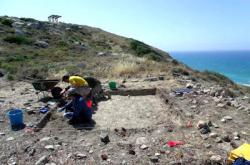 Kourion - A team of archaeologists from a Texas theological seminary and the University of Cyprus is hoping to reveal the ordinary domestic lives of Cyprus’ early Christians in a new dig at Kourion (Curium) which was destroyed by a series of earthquakes around 365 AD. A long-cherished hope of team leader Professor Thomas Davis is that excavations will also uncover the island’s first ever “house-church”, a private home where early believers met to worship at a time when fear of persecution prevented the erection of churches. Kourion, which archaeologists believe numbered up to 10,000 people, is situated in an area steeped in mostly Roman history whose famous remains include a large theatre, a market place, public baths and mosaics. Close by is the Sanctuary of Apollon Ylatis. Just three days into the dig this week, and after digging only 20 cms down, the team had already uncovered what could be the wall of a previously uncovered house. They intend to dig down for up to a further two metres. “Currently, we’ve opened up an area of 27 m2 and we will expand it to about 70m2. We have found what I think it could be the wall of a house. It’s plastered, which means it’s not something solely utilitarian. The wall has been smoothed nicely; we will see with further investigations,” Davis said. He explained that prior to the quakes from 365 to 370 AD, pagan temples in Kourion were still active, and there were no churches. Although the history of Christianity in Cyprus dates back to the historic visit of Saint Paul and Barnabas in around 45 AD, and although a Paphos proconsul was to become the first official Roman governor to embrace the religion, the spread of Christianity in Cyprus was patchy at first.
Kourion - A team of archaeologists from a Texas theological seminary and the University of Cyprus is hoping to reveal the ordinary domestic lives of Cyprus’ early Christians in a new dig at Kourion (Curium) which was destroyed by a series of earthquakes around 365 AD. A long-cherished hope of team leader Professor Thomas Davis is that excavations will also uncover the island’s first ever “house-church”, a private home where early believers met to worship at a time when fear of persecution prevented the erection of churches. Kourion, which archaeologists believe numbered up to 10,000 people, is situated in an area steeped in mostly Roman history whose famous remains include a large theatre, a market place, public baths and mosaics. Close by is the Sanctuary of Apollon Ylatis. Just three days into the dig this week, and after digging only 20 cms down, the team had already uncovered what could be the wall of a previously uncovered house. They intend to dig down for up to a further two metres. “Currently, we’ve opened up an area of 27 m2 and we will expand it to about 70m2. We have found what I think it could be the wall of a house. It’s plastered, which means it’s not something solely utilitarian. The wall has been smoothed nicely; we will see with further investigations,” Davis said. He explained that prior to the quakes from 365 to 370 AD, pagan temples in Kourion were still active, and there were no churches. Although the history of Christianity in Cyprus dates back to the historic visit of Saint Paul and Barnabas in around 45 AD, and although a Paphos proconsul was to become the first official Roman governor to embrace the religion, the spread of Christianity in Cyprus was patchy at first.
http://www.cyprus-mail.com/kourion/kourion-excavation-hoping-cyprus-first/20120527
IRAK – 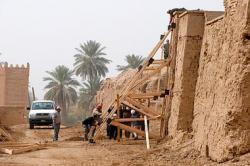 Babylone - The capitol of the Babylonian empire, one of the wonders of the ancient world, has fallen on hard times. Only a fraction of the 4,000-year-old site has been excavated but the ruins above ground have been eroded by wind and salt water, and damaged both by sweeping reconstruction ordered by former President Saddam Hussein in the 1980s and the more recent US military occupation. The Iraqi leader's project to rebuild the walls, literally in his own name, and create an imagined version of the ancient city has done major damage to the remains of the city. It also hampered the ruins' prospect for preservation. Despite Babylon's historical and religious significance, UNESCO has twice turned down Iraq’s bid to list the ancient city as a world heritage site. The fragile walls of the old city are now sandwiched between heavier modern bricks pressing down on the original mud brick and a rising water table that has sent salt water seeping into the foundations of the ancient walls. In the 1980s, concrete was poured directly against the original brick. The conversation project is mapping the damage with a three-dimensional scan – brick by brick - to see how to stabilize the site and change the drainage pattern.
Babylone - The capitol of the Babylonian empire, one of the wonders of the ancient world, has fallen on hard times. Only a fraction of the 4,000-year-old site has been excavated but the ruins above ground have been eroded by wind and salt water, and damaged both by sweeping reconstruction ordered by former President Saddam Hussein in the 1980s and the more recent US military occupation. The Iraqi leader's project to rebuild the walls, literally in his own name, and create an imagined version of the ancient city has done major damage to the remains of the city. It also hampered the ruins' prospect for preservation. Despite Babylon's historical and religious significance, UNESCO has twice turned down Iraq’s bid to list the ancient city as a world heritage site. The fragile walls of the old city are now sandwiched between heavier modern bricks pressing down on the original mud brick and a rising water table that has sent salt water seeping into the foundations of the ancient walls. In the 1980s, concrete was poured directly against the original brick. The conversation project is mapping the damage with a three-dimensional scan – brick by brick - to see how to stabilize the site and change the drainage pattern.
http://www.csmonitor.com/World/Middle-East/2012/0525/A-race-to-shore-up-the-ancient-walls-of-Babylon/(page)/2